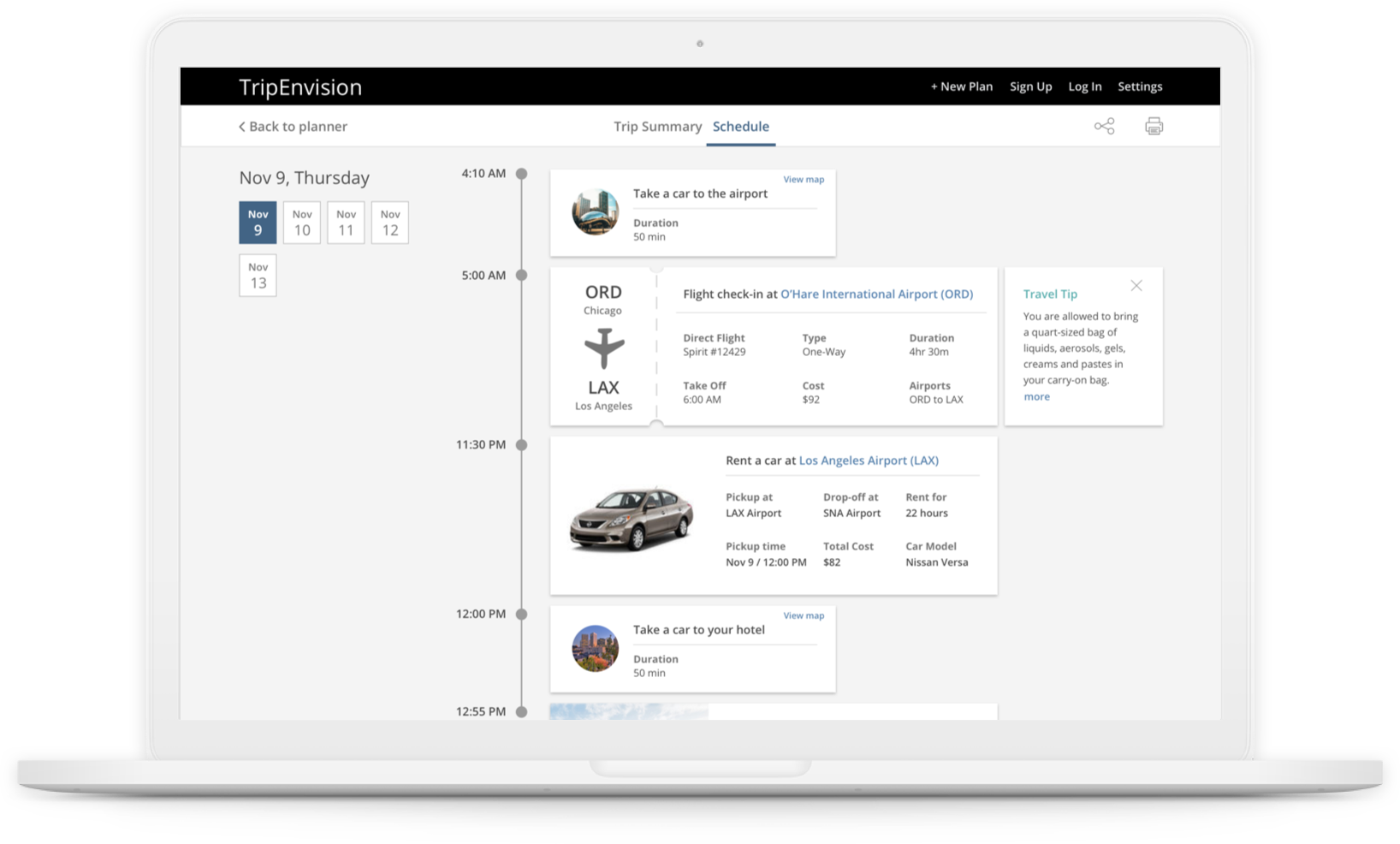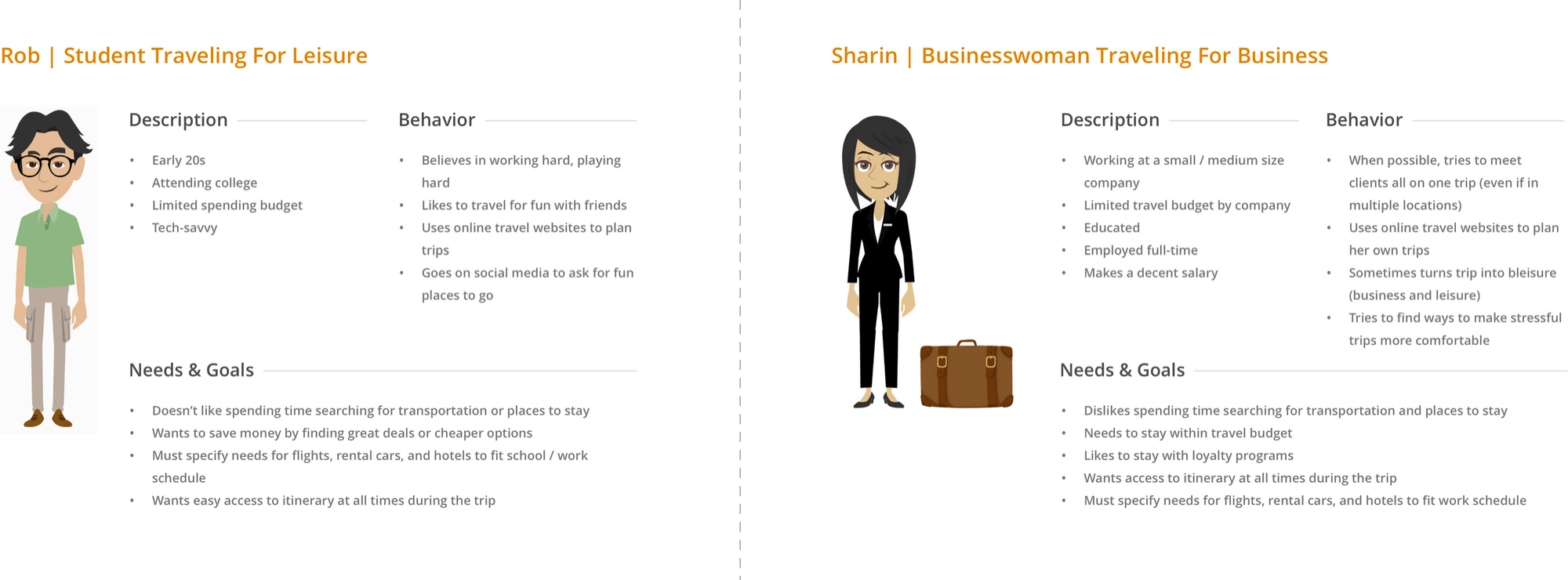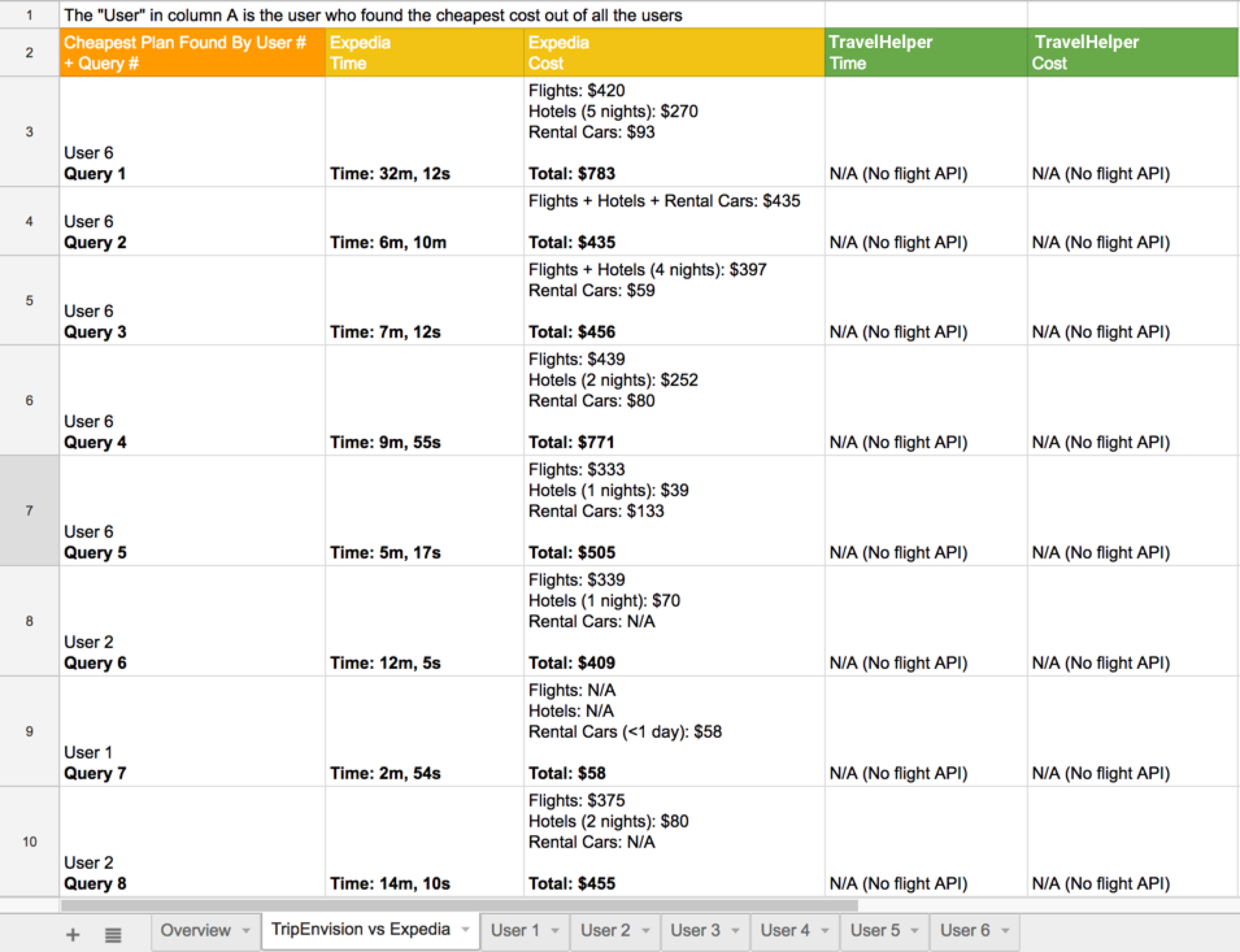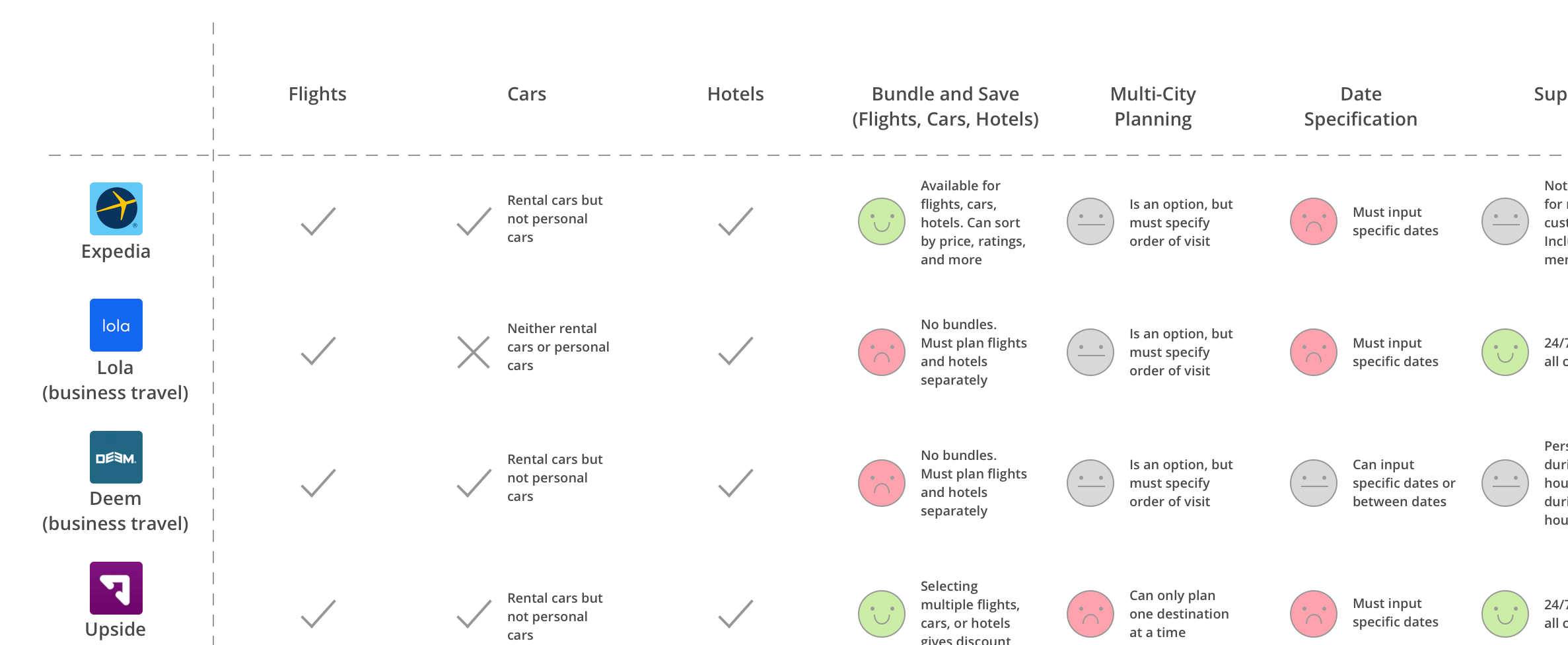









TravelHelper was founded on the notion that complex travel itineraries are difficult to plan. Complex travel involves multiple destinations, hotels, or modes of transportation for a trip. Say you wanted to go to Chicago for 3 days, Portland for 3 days, and Dallas for 4 days sometime in June, but you have no preference for the order of the visit except that it must be the cheapest plan possible. That means you must search for 6 different possible orders for the destinations, find which days the hotels in each location are cheapest, and find which modes of transportation are the cheapest (renting a car isn’t always cheaper than a flight). To do this for every possible combination of days during the month of June makes this a nearly impossible task.

While traditional online travel agencies (or OTA’s) like Expedia force you to specify the days and order of your travel, TravelHelper allows you to only specify what’s important to you. If you wanted to find the cheapest itinerary to go to Chicago for 3 days, Portland for 3 days, and Dallas for 4 days anytime in June, TravelHelper can perform trillions of calculations to find you the best itinerary possible in seconds, given your constraints and preferences. No matter if you’re traveling for business or leisure, you’ll be able to save time and money.
Our original value proposition was that TravelHelper saves travelers time on planning multi-destination trips and money by finding the cheapest itinerary possible. However, we needed to test if time and money were real problems for travelers using existing OTA’s, so I began talking to potential primary users, starting with students because there are many who travel on a budget (and there were many near us on campus).

As we found the problem to be bigger than just for people traveling for leisure, I began interviewing other groups: business people (because they can have clients in multiple locations) and travel agents (because they often plan complex trips for leisure and business travelers who have trouble planning them for themselves). We then distilled the information we gathered and grouped them into two user types: leisure travelers and business travelers. Below are two personas that we used to guide us as we designed and developed our platform.

We also created ten travel scenarios as a story test for users. These scenarios were designed to be difficult to plan for if using existing OTA’s. It was our hope that the statistics generated from these scenarios would give us, as well as potential investors, quantitative evidence that we are truly filling a need. Unfortunately, TravelHelper as a platform didn’t get far enough to where we could compare the statistics of users planning a trip through an OTA versus using TravelHelper; I was only able to record the OTA side.

I conducted a competitive analysis to understand the landscape of the industry and see what competitors were doing to deal with complex travel. However, even with the multitude of OTA’s, no current OTA is able to handle this complexity well because they force the user to specify the days and order of their travel. That means the user has to look up every combination of days of travel and order of destinations to truly find the cheapest or quickest itinerary. Below is a small snapshot.

When a tool is made to be flexible, it can create complexity in of itself. If not designed right, it may end up confusing the user more than it helps them. I needed to make the platform a delightful experience to use while still giving users the flexibility they need to only specify what they wanted to specify.
We decided that presenting the user with a limited amount of questions at a time was the best way to keep the UI clean and the flow of information easy to understand. This is a trend you can easily find online due to its universal application. Whether you look at Turbotax or Apartment List, it makes for a greater user experience.

What do you do if you don’t care about when you arrive at a destination or how long you’re there for? You simply say, “I don’t care.” Having a platform that can take this into account has never been done before in an OTA. Users we interviewed all had ranging requirements for their trips--from needing to be somewhere at a specific date to not caring about the exact date at all. In order to have a flexible tool that could meet any sort of requirements, we used I don’t care, Before, After, and Between specific dates as the options to when users could be at a location. The second essential question was the duration at a destination and, once again, we had I don’t care along with At most, Exactly, and At least as the options.
I wanted the user to see the most pertinent information as soon as the itinerary was given. After talking to users and looking at the multitude of information online, we gathered that users wanted to see the cost of the trip, the order of the destinations, and the modes of transportation (TravelHelper will find the cheapest from all the modes the user says they’re open to using). By using a map to display the destinations and modes of transportation, users are able to quickly see what the itinerary has planned for them.
Another powerful aspect of TravelHelper is the ability to dislike a part of the trip. Don’t like that the itinerary gave you an evening flight? Simply click Dislike on the flight and choose your available departing times. Don’t like that you’ve been given a rental car? Dislike the transportation mode. Once you’ve picked all the things you dislike, confirm the changes and you’ll be given a brand new itinerary that matches your needs as long as they’re available. If not, TravelHelper will let you know that your specification can’t be found. This was an important feature to add because users didn’t like having to go all the way back to the question pages every time they wanted to make a change.
Unfortunately, TravelHelper ran out of funding as the MVP was rolling out. TravelHelper had great potential and fit the needs of many users, but we couldn’t get the quantitative proof we needed in time for investors to fund the next round. I believe that trying to meet the needs of both leisure travelers and business travelers led us to splitting and, therefore, running out of time. But if there is ever a time to reflect and learn, it’s from when you don’t succeed. Here are some of the things I’ve learned along the way: